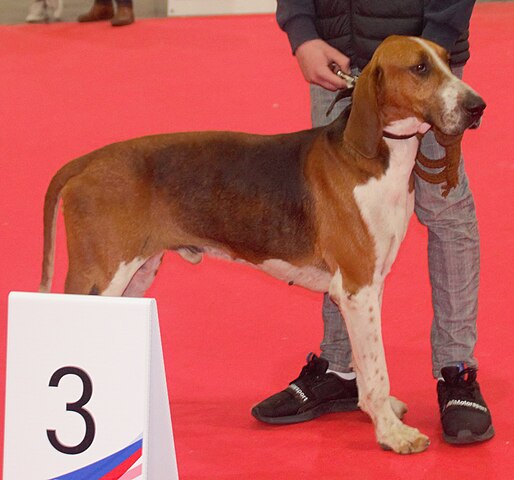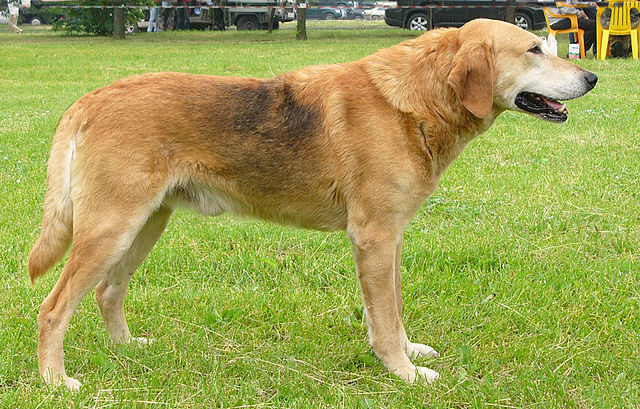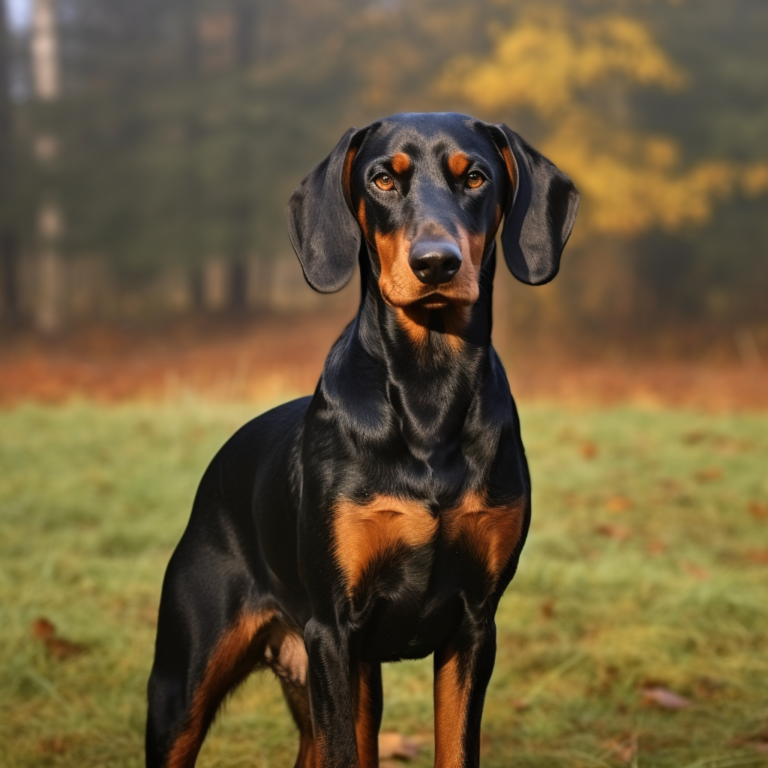The Great Anglo-French Tricolor Hound is a pack-hunting scenthound breed, and the last of the seven Anglo-French Hounds to be profiled in this blog. Created by mixing Poitevins with English Foxhounds, they were bred to hunt a variety of game both large and small although specialized in larger game. They are known for their excellent work ethic when it comes to hunting, their fantastic endurance, and their adaptability to all types of terrain and climate. Like all scenthounds, they have a well-developed sense of smell. The “Great” in their name refers not to the size of the dog but rather by the size of the game that they primarily were used on. These hounds are rare in the United States although are more well-known overseas, where they are recognized by the FCI and the French Kennel Club. While they are recognized by the UKC in America, they are seen only infrequently.
Anglo-French Tricolors have been primarily bred for hunting and are rarely used as pets. While they can become a pet in the right circumstances, prospective owners should realize the unique needs that make them difficult to own by the general public. First and foremost, these hounds have boundless energy and need an extreme amount of exercise! Furthermore they cannot be let off lead in most circumstances as they will bolt after animals perceived as prey (or even the lingering scent of an animal). This is fine in a country setting when they are actually being used for hunting, but is a recipe for disaster in most city or suburban areas. Don’t even think about keeping this energetic hound in an apartment! Not only does an apartment not provide enough room, but neighbors will quickly become annoyed when the hound begins baying daily – a common trait of the breed.
As pack hounds, Great Anglo-French Tricolors prefer to live with other dogs. In fact, it was not uncommon for packs of several dozen to be kept together in their country of origin! Unsurprisingly, this social and happy-go-lucky hound needs almost constant company and doesn’t do well when left all alone. A prospective owner really shouldn’t consider this breed unless they plan to have at least a few hounds, which adds to the overall commitment and possible frustrations of such a scenario. To put this into perspective for a hound in a pet home – imagine a situation in which many hounds live together… and a raccoon wanders next to the fence. Even with only three or four hounds, the determination and relentless nature of all hounds baying and charging the fence is not the type of situation that most pet homes can handle!
Great Anglo-French Tricolor Hounds usually get along well with children when socialized to them, although are recommended only for families with older kids because of their high exuberance. They are affectionate and loyal with their owners while remaining fairly aloof towards strangers, although usually don’t make good watchdogs. Protecting their property isn’t normally high on their list of priorities as they would much rather patrol the yard for wild animals or even wandering cats. For obvious reasons this hound is usually not good in homes with felines. An indoor cat may or may not be safe if the hound was raised with it as a puppy, but each additional household hound increases the chances of an unhappy incident.
As might be surmised from the name, the Anglo-French Tricolor Hound is always tricolor although he can appear either with a black blanket over the body or black patches throughout. The tan is always clear and bright in color. This is a large, robust yet athletic breed with a short coat that requires brushing once or twice a week. Nails should be kept short as well as part of the regular maintenance, and ears should be cleaned weekly. After any hunting excursion (or hiking, or similar “field trip”) it’s also important to examine the hound’s ears and coat for injuries or parasites such as ticks.
The Anglo-French Tricolor needs very little special training to hunt, as he does this fairly instinctively, although he should receive an “education” in the form of obedience as well. He generally learns commands quickly and enjoys pleasing his owner, although will be less likely to work for a person whom he doesn’t respect. He tends to be very stubborn and has no qualms about refusing commands when he doesn’t feel like working (or when he thinks he can get away with it). An owner needs to be firm, patient and even more stubborn than the dog! Even if the hound is never used for actual hunting, it makes sense to sprinkle in related “jobs” to his training repertoire that mimic using his nose. Do this to make him happy and give him purpose! Without enough mental stimulation he can become hyperactive, unruly and destructive.



